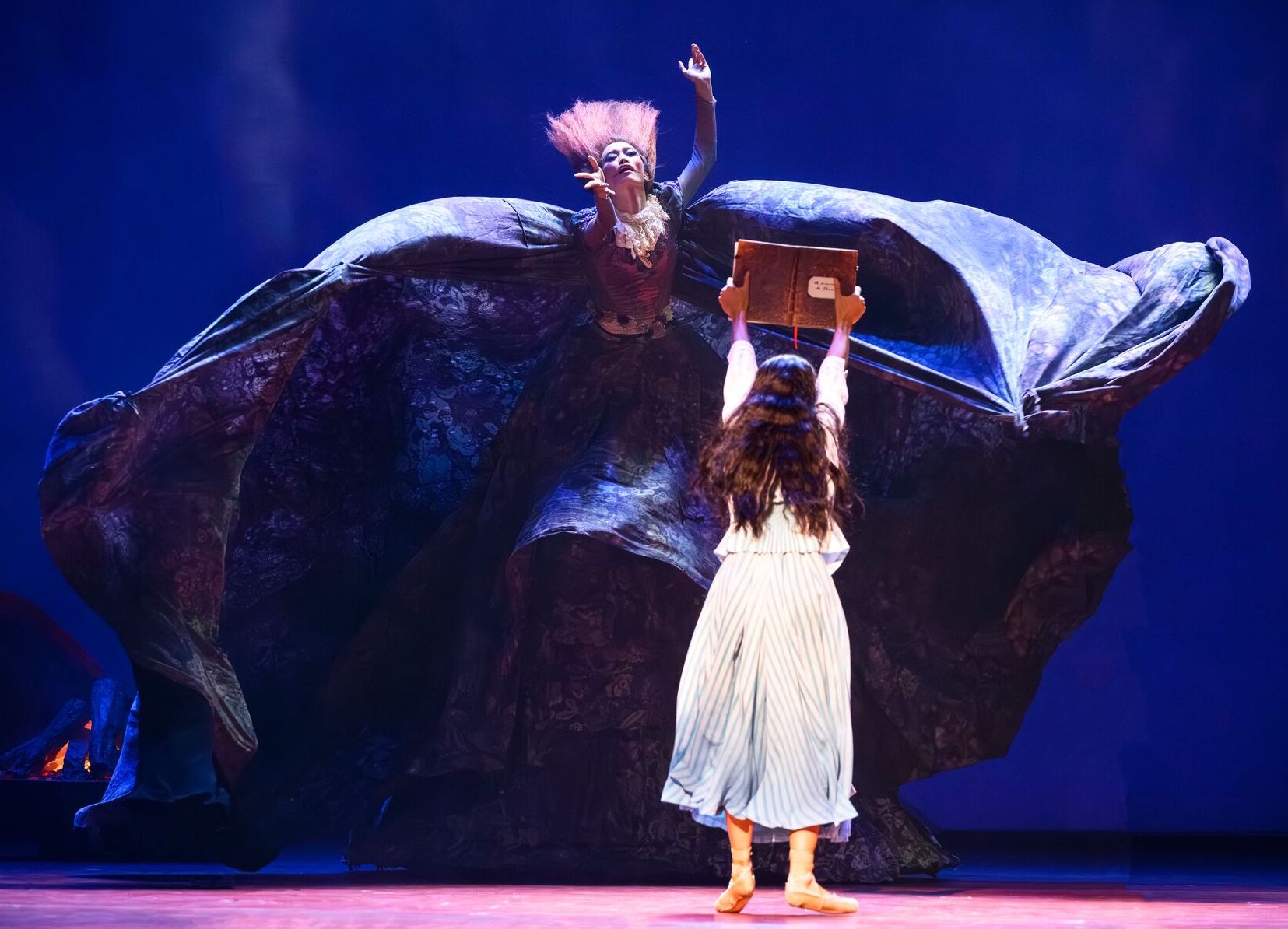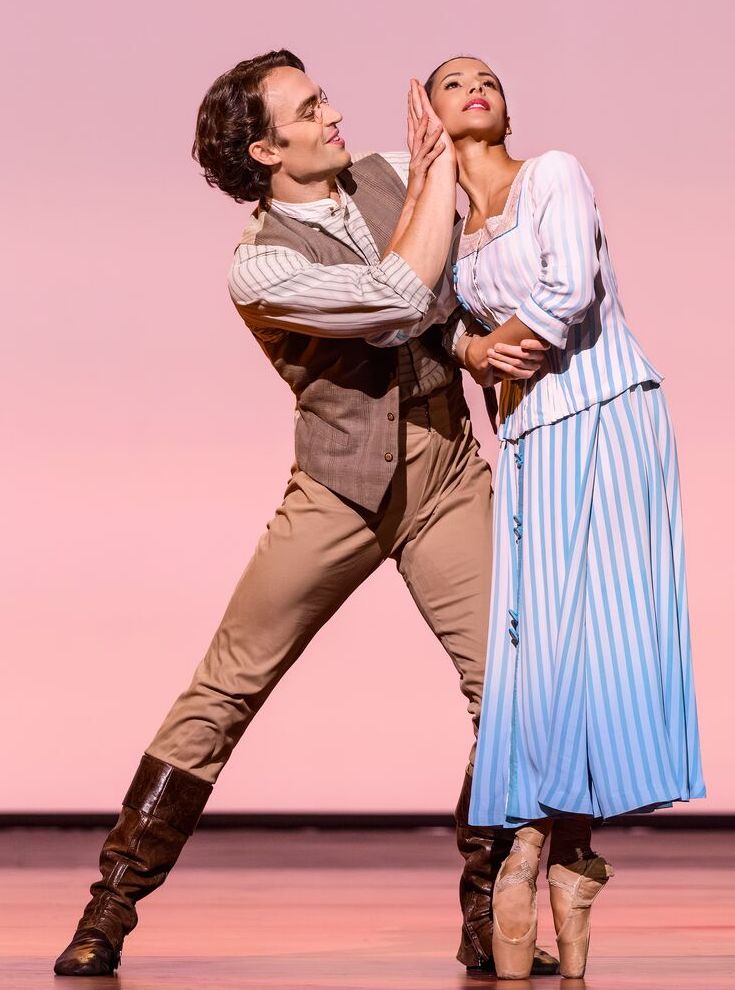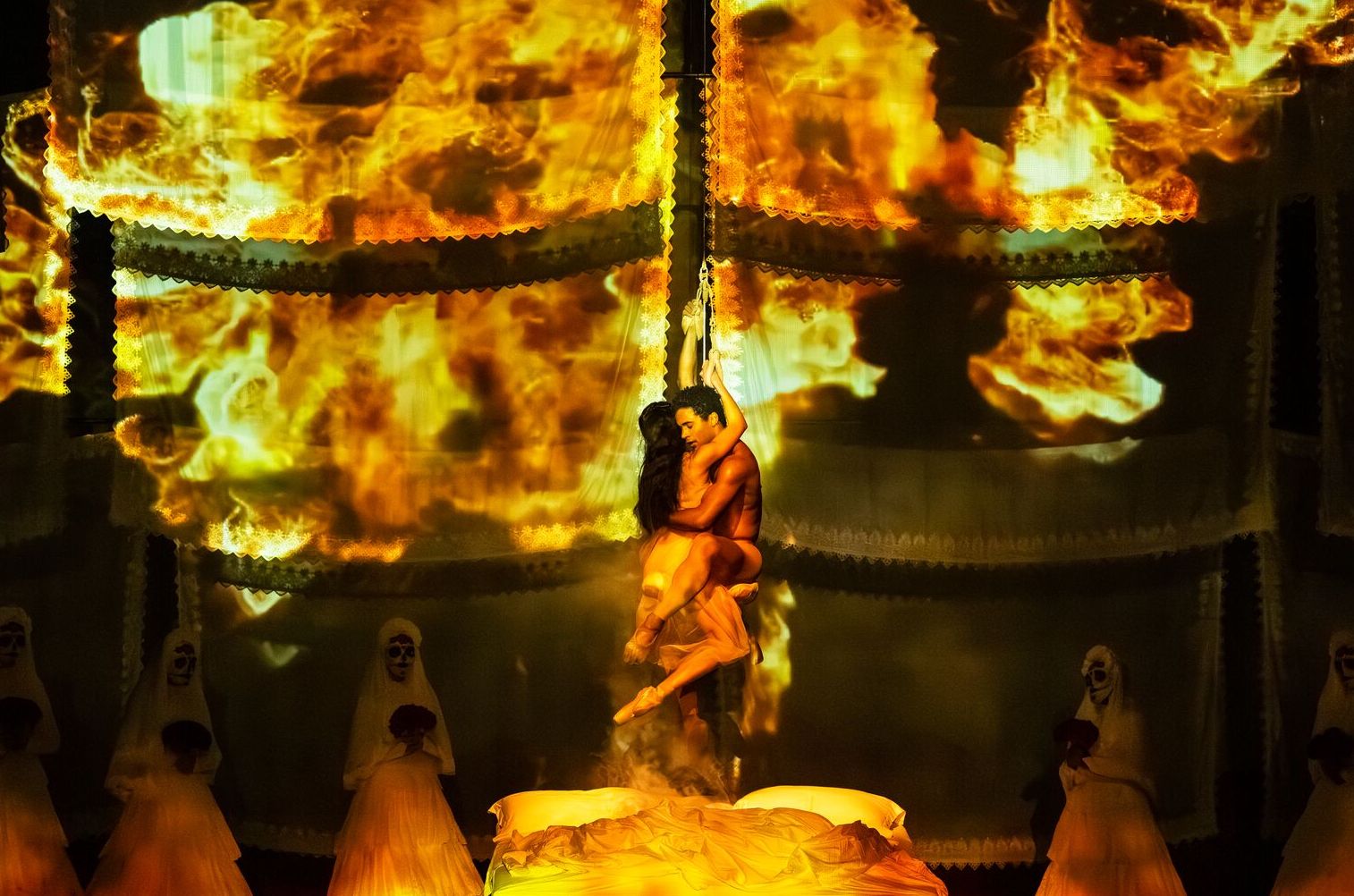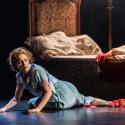Christopher Wheeldon has mined a new seam of narrative pieces for the Royal Ballet, having started out as a supreme practitioner of the abstract. After The Winter’s Tale and Alice in Wonderland, he landed in 2022 on the magical realist novel Like Water for Chocolate, set in Mexico at the turn of the 20th century. This for me is less successful than the other two.
Which is not to say it doesn’t provide many pleasures along the way, not least its superb stage pictures, which start right from curtain up, when we see a long line of Frida Kahlos in wedding dresses and Day of the Dead masks, who slowly pivot to reveal that the backs of their bodies are dressed in widow’s weeds. They will return to sit knitting in the background, silent judges in black of the story and its participants. The narrative’s prime impulse is represented right here: love that leads to death.
In scene after scene, Bob Crowley’s designs aim for massive impact, from a flies-height lace patchwork curtain to a scene of numerous gauzy cloths concealing canopied tents that stand in for bedrooms. In the background is a harsh brick-red landscape of mountains and leafless trees. Video projections of billowing clouds on the back wall move through colour palettes of extreme magenta and purple, or peach and sky-blue, to dramatise the mood of the scene. The ending (pictured bottom), when the lovers’ passion engulfs them in gold and black flames, and they rise on a wire, entangled for eternity, is borderline kitsch.
Driving the action on is the music of Wheeldon’s regular collaborator, Joby Talbot, in a clever approximation of Mexican rhythms and styles that never descends into mere pastiche. It’s bouncy and robust and brings out the best in the exuberant dancers. A special commendation for Luca Acri as a revolutionary leader in check shirt and chaps, who seemed to be on fire himself on opening night.
 In the lead roles of Tita and Pedro, Francesca Hayward and Marcelino Sambé were suitably intense star-crossed lovers, their duets a sensual delight. Wheeldon has devised holds and lifts Macmillan didn’t get to, often involving Hayward being held upside down, her head almost touching the floor, or being flown around lying straight across Sambé’s shoulders. It’s heady stuff, mirrored in a flashback sequence where we see Tita’s cruel mother, Elena (Fumi Kaneko, pictured above right with Francesca Hayward), in a similar swoony duet with her doomed lover Jose (Francisco Serrano).
In the lead roles of Tita and Pedro, Francesca Hayward and Marcelino Sambé were suitably intense star-crossed lovers, their duets a sensual delight. Wheeldon has devised holds and lifts Macmillan didn’t get to, often involving Hayward being held upside down, her head almost touching the floor, or being flown around lying straight across Sambé’s shoulders. It’s heady stuff, mirrored in a flashback sequence where we see Tita’s cruel mother, Elena (Fumi Kaneko, pictured above right with Francesca Hayward), in a similar swoony duet with her doomed lover Jose (Francisco Serrano).
Kaneko is increasingly impressive in roles outside the core classical repertoire, a hilarious Red Queen in Wheeldon’s Alice. Here she is given abrupt, angular moves that accentuate Elena’s rigidity, determined to keep her youngest daughter Tita unmarried, according to family custom. She is given the best visual moment in the piece, when she returns from the grave, her fiery red hair teased into a bouffant and her voluminous dress billowing behind her, seeping smoke. (She can also bourre – backwards – stunningly fast.) As her middle daughter, Gertrudis, Viola Pantuso is a petite fireball, a headstrong girl who runs away from home to become a rebel leader. Acting plaudits, too, to Matthew Ball (pictured below left with Francesca Hayward) in the rather thankless role of Dr John Brown, a quiet, decent man in love with Tita. Ball manages to divert his usual romantic appeal into this more timid persona.
 Where I part company with the piece’s ambitions, I suspect, is in the very fundamental one of adapting it in the first place. This is a big, sprawling saga covering more than 20 years and too many characters for many of them to be unpacked adequately. We see Tita, for example, cooking with her beloved Nacha (Kristen McNally), but there is little room for nuance here, the subtler insights Macmillan allows Juliet, say, in her scenes with her Nurse. And Nacha is a corpse before we know it. (Except we don’t know who the wrapped-up body is unless we read the programme synopsis.) The two lovers become almost generic types, part of a much bigger picture where the choreography becomes the focal point. It’s terrific, charged choreography at times, but it still didn’t leave me emotionally engaged with its performers.
Where I part company with the piece’s ambitions, I suspect, is in the very fundamental one of adapting it in the first place. This is a big, sprawling saga covering more than 20 years and too many characters for many of them to be unpacked adequately. We see Tita, for example, cooking with her beloved Nacha (Kristen McNally), but there is little room for nuance here, the subtler insights Macmillan allows Juliet, say, in her scenes with her Nurse. And Nacha is a corpse before we know it. (Except we don’t know who the wrapped-up body is unless we read the programme synopsis.) The two lovers become almost generic types, part of a much bigger picture where the choreography becomes the focal point. It’s terrific, charged choreography at times, but it still didn’t leave me emotionally engaged with its performers.
Of course, Wheeldon is working with a less well known text/film here than a Shakespeare play. But the novel’s and film’s ambitions are such that, without a radically different approach, his adaptation has inevitably ended up schematic. Characters move in and out as part of a larger pattern, without being satisfyingly amplified: if you don’t know the original (or read the synopsis) you may well be lost. Dr John, for example, is a widower with a young son (impressively danced by a Royal Ballet School pupil), but this isn’t immediately obvious; neither is the fact that he and Tita are not married when we catch up with them in Act 2, though they seem to behave like a well established loving couple. And without reading the synopsis, I wouldn't have realised Gertrudis had run away, not with a circus but with a bunch of renegades. Enjoyable thought Talbot’s inventive, perky score is, it seems to encourage this lack of emotional exploration, driving the action on from incident to incident and not allowing it to settle for long before the next idea starts up. Music and moves are beautifully in synch, as you would hope when the choreographer and composer worked on the piece from scratch, but there is a light-footed quality to the score, as if it is there purely to provide inspiration for the dancing, like a film soundtrack, and then, with so much plot still to cover. to hurry on to the next scene. Only at the end, when the two lovers are given a long, sensual duet, did I start to feel something for them and their plight.
Enjoyable thought Talbot’s inventive, perky score is, it seems to encourage this lack of emotional exploration, driving the action on from incident to incident and not allowing it to settle for long before the next idea starts up. Music and moves are beautifully in synch, as you would hope when the choreographer and composer worked on the piece from scratch, but there is a light-footed quality to the score, as if it is there purely to provide inspiration for the dancing, like a film soundtrack, and then, with so much plot still to cover. to hurry on to the next scene. Only at the end, when the two lovers are given a long, sensual duet, did I start to feel something for them and their plight.
Five stars for the performers, the design and the basic choreography, but I’d love a dramaturg to get to work on streamlining the “text”.














Add comment